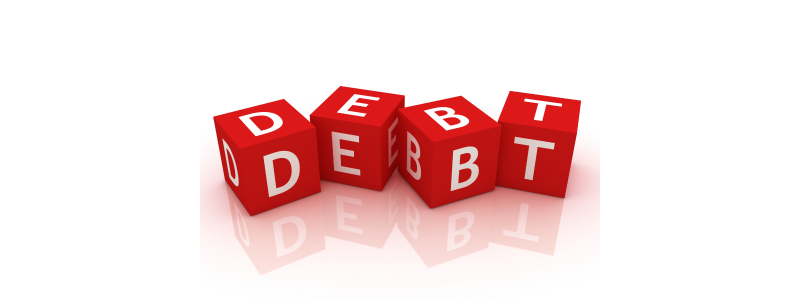
In personal finance, debt is often a topic of debate. People have varied opinions on the need for debt, influenced by cultural beliefs, upbringing, and financial knowledge.
To some, it represents crippling financial decisions with long-lasting ramifications, while others view it as a powerful tool essential for wealth creation and financial progression. But not all debt is created equal. Discerning between 'good' and 'bad' debt is pivotal.
As individuals climb the financial ladder, they typically enter three predominant stages: the impulsive acquisitions that often lead to depreciating value, the conservative mindset prioritizing safety, and the strategic use of debt to amass wealth.
1. The Liability Ladder (Impulsive Decisions, Lasting Consequences)
At the base of the ladder is where individuals accumulate debt without foresight. These are often purchases made on impulse or without a long-term plan in place. By buying liabilities that quickly depreciate in value, individuals are effectively digging themselves into financial quicksand.
The pitfalls of impulse purchasing:
- The accumulated debt not only costs money in terms of interest but has a tendency to attract additional debt.
- As the acquired items (like electronics, cars, furniture, and jewelry) lose value over time, the individual's net worth diminishes.
- This approach ties up funds that could have been invested more wisely elsewhere, leading to missed opportunities.
Five examples illustrating the "Liability Ladder" mindset:
- Flashy Car Loans: Taking out a large loan to buy a brand-new luxury car on impulse, only to have its value drop significantly the moment it's driven off the lot, all while being saddled with high-interest payments.
- Fashion Frenzy: Racking up credit card debt to buy the latest designer clothing or accessories, which quickly go out of style and hold little to no resale value.
- Tech Temptations: Purchasing the latest electronic gadgets or devices without waiting for prices to drop or without truly needing the upgrade, resulting in an accumulation of devices that depreciate rapidly.
- Vacation Ventures: Financing an extravagant vacation on credit without having the means to pay it off immediately, leading to lasting debt for a short-term experience.
- Home Upgrades without ROI: Borrowing money for home improvements or furnishings that don't necessarily increase the home's value, such as expensive interior decor or non-essential amenities, leaving one with debt and no appreciable asset increase.
These examples exemplify the risks and consequences of impulsive decisions. Acting on immediate desires without considering long-term financial implications can have lasting ramifications on one's financial health.

2. The Safety Net (Security First, Opportunities Second)
A step above is the conservative mindset: if you can't afford it outright, don't buy it. This school of thought prioritizes safety and financial security over all else. People in this category avoid debt like the plague, preferring to live within their means. While this approach minimizes financial risk and ensures a stable financial standing, it may sometimes prevent individuals from capitalizing on fruitful opportunities that require an initial investment.
Five examples of the safety net approach, where security is prioritized:
- Emergency Funds: Setting aside a portion of income into an emergency fund to cover unexpected expenses. This ensures that one doesn't have to borrow or dip into long-term savings when sudden costs arise.
- Cash Purchases: Buying items, from electronics to vehicles, only when one has saved enough money, thus avoiding interest payments and potential debt accumulation.
- Renting Instead of Buying: Opting to rent a home rather than taking out a mortgage, thus avoiding long-term debt and the uncertainties of property value fluctuations.
- Avoiding Credit Card Balances: Using credit cards for convenience but paying off the full balance each month. This way, one avoids high-interest charges and potential debt spirals.
- Opting for Free or Low-Cost Education: Pursuing community college, online courses, or scholarships instead of expensive universities that may require taking out hefty student loans.
These examples highlight the cautious approach individuals with the "Safety Net" mindset might adopt. While it shields them from potential financial setbacks, it also requires patience and could mean slower financial growth.

3. Strategic Spending: The Power of Leverage
At the pinnacle of financial wisdom is the strategic use of debt. This perspective sees debt not as a burden but as a tool to be wielded wisely. By leveraging debt to purchase assets that generate income, individuals can create sustainable wealth. The key lies in ensuring that any debt undertaken serves a purpose – to fuel investments that not only cover their costs but also generate surplus income. Over time, this approach can lead to financial growth and freedom.
Five examples of strategic spending leveraging the power of debt:
- Real Estate Investments: Borrowing money to buy a rental property. While the loan incurs interest, the rental income might not only cover the mortgage payments but also provide a steady income stream, eventually leading to an appreciating asset.
- Business Ventures: Taking out a business loan to start or expand a company. As the business grows and profits, it can repay the loan and continue to generate revenue.
- Stock Market Investments: Using margin (borrowed money) to invest in stocks or funds that have the potential for higher returns. If done wisely and with proper risk management, the returns can exceed the interest paid on the borrowed money.
- Education: Taking student loans to pursue higher education or professional courses. The acquired knowledge and skills can potentially lead to higher-earning jobs or opportunities, allowing for the loan to be paid back and additional income to be earned in the long run.
- Agricultural Investments: Borrowing money to purchase agricultural land or equipment. With the right management, the produce or products can not only repay the debt but also provide sustainable income over the years.
Each of these examples involves calculated risks. It's vital for individuals to conduct thorough research, understand potential pitfalls, and be prepared for various outcomes when leveraging debt strategically.
Conclusion
Debt, in itself, is neither good nor bad. It's the purpose behind the debt and the strategy employed that determines its value. While jumping into liability without a clear plan can lead to financial woes, shunning all forms of debt may mean missing out on opportunities. Striking a balance, and understanding when and how to leverage debt, can pave the way to a prosperous financial future.

